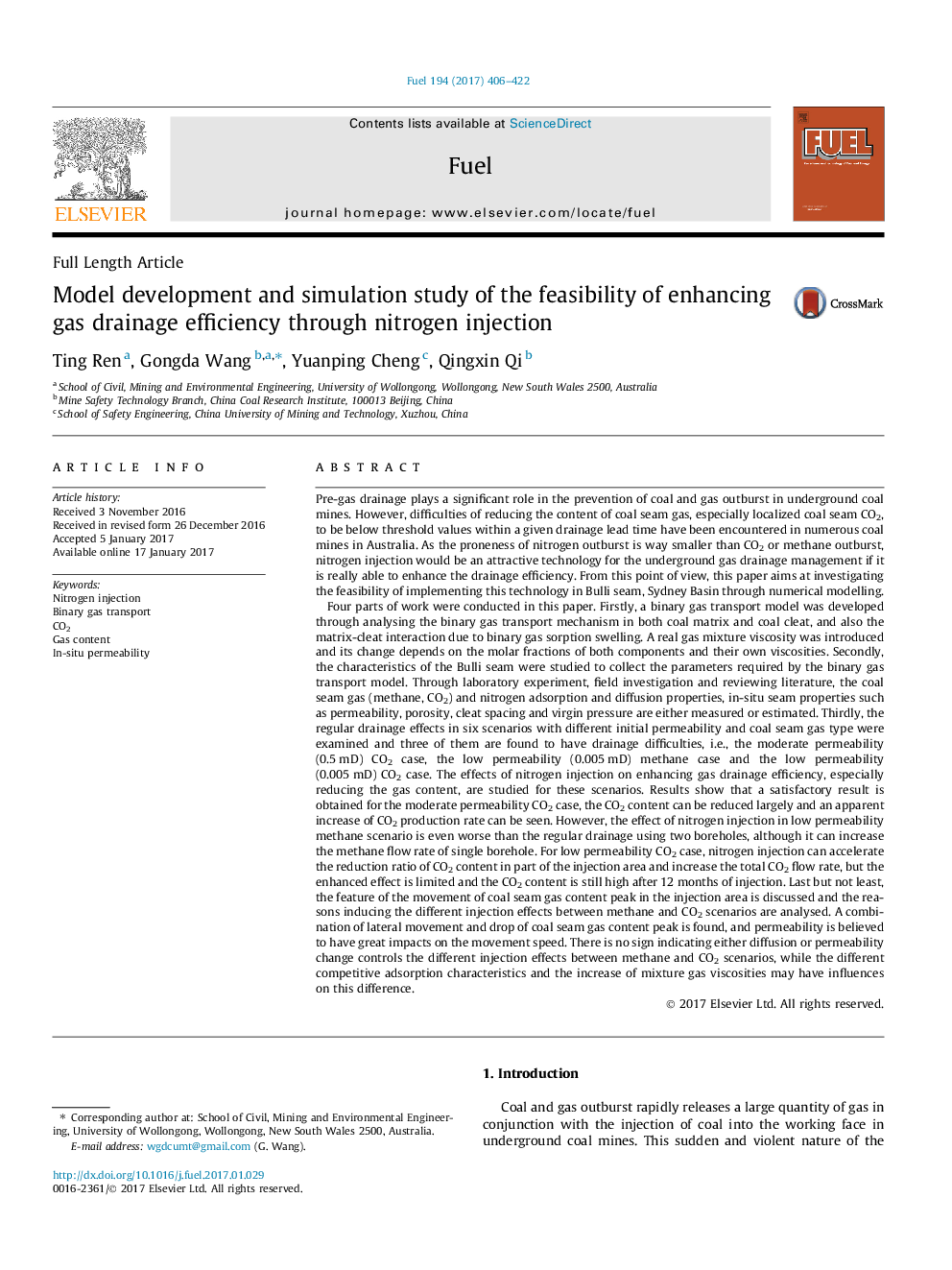| کد مقاله | کد نشریه | سال انتشار | مقاله انگلیسی | نسخه تمام متن |
|---|---|---|---|---|
| 6475508 | 1424970 | 2017 | 17 صفحه PDF | دانلود رایگان |
Pre-gas drainage plays a significant role in the prevention of coal and gas outburst in underground coal mines. However, difficulties of reducing the content of coal seam gas, especially localized coal seam CO2, to be below threshold values within a given drainage lead time have been encountered in numerous coal mines in Australia. As the proneness of nitrogen outburst is way smaller than CO2 or methane outburst, nitrogen injection would be an attractive technology for the underground gas drainage management if it is really able to enhance the drainage efficiency. From this point of view, this paper aims at investigating the feasibility of implementing this technology in Bulli seam, Sydney Basin through numerical modelling.Four parts of work were conducted in this paper. Firstly, a binary gas transport model was developed through analysing the binary gas transport mechanism in both coal matrix and coal cleat, and also the matrix-cleat interaction due to binary gas sorption swelling. A real gas mixture viscosity was introduced and its change depends on the molar fractions of both components and their own viscosities. Secondly, the characteristics of the Bulli seam were studied to collect the parameters required by the binary gas transport model. Through laboratory experiment, field investigation and reviewing literature, the coal seam gas (methane, CO2) and nitrogen adsorption and diffusion properties, in-situ seam properties such as permeability, porosity, cleat spacing and virgin pressure are either measured or estimated. Thirdly, the regular drainage effects in six scenarios with different initial permeability and coal seam gas type were examined and three of them are found to have drainage difficulties, i.e., the moderate permeability (0.5Â mD) CO2 case, the low permeability (0.005Â mD) methane case and the low permeability (0.005Â mD) CO2 case. The effects of nitrogen injection on enhancing gas drainage efficiency, especially reducing the gas content, are studied for these scenarios. Results show that a satisfactory result is obtained for the moderate permeability CO2 case, the CO2 content can be reduced largely and an apparent increase of CO2 production rate can be seen. However, the effect of nitrogen injection in low permeability methane scenario is even worse than the regular drainage using two boreholes, although it can increase the methane flow rate of single borehole. For low permeability CO2 case, nitrogen injection can accelerate the reduction ratio of CO2 content in part of the injection area and increase the total CO2 flow rate, but the enhanced effect is limited and the CO2 content is still high after 12Â months of injection. Last but not least, the feature of the movement of coal seam gas content peak in the injection area is discussed and the reasons inducing the different injection effects between methane and CO2 scenarios are analysed. A combination of lateral movement and drop of coal seam gas content peak is found, and permeability is believed to have great impacts on the movement speed. There is no sign indicating either diffusion or permeability change controls the different injection effects between methane and CO2 scenarios, while the different competitive adsorption characteristics and the increase of mixture gas viscosities may have influences on this difference.
Journal: Fuel - Volume 194, 15 April 2017, Pages 406-422
